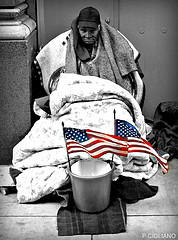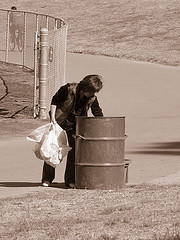I recently watched and thoroughly enjoyed all 13 episodes of Netflix’s new women-in-prison drama, Orange is the New Black based on Piper Kerman’s book about her time in federal prison. I thought the many characters were richly portrayed, the well-written episodes were compelling and dramatic, and the series focused on many of the issues that plague incarcerated females.
I also greatly enjoyed the first two seasons of the excellent British incarcerated women series Bad Girls. You can see the powerful 10-episode first season on Netflix, and many scenes are free on YouTube. There have been 106 episodes broadcast in Britain from 1999 to 2006. The series features 50 disparate female characters. A stage musical version ran briefly in 2007 and is available on DVD. Bad Girls won 10 major British awards, including Most Popular Drama, Best Loved Drama, three Best Actresses and a Best Actor. In Britain, population 60 million, several episodes attracted more than 9 million viewers. It has aired in many countries, including Montenegro, Finland, New Zealand and Georgia. It has been reported that Oscar winner Alan Ball (American Beauty, Six Feet Under) is adapting an American version of Bad Girls for HBO.
In the American series, Orange is the New Black, there were many minority and lesbian characters, an elderly prisoner and even a transgendered inmate. Both series dealt with mental illness, drug abuse, chronic disease, prison rape, sex for favors, abusive and manipulative guards and other pressing issues. Bad Girls dramatized prison pregnancy and childbirth. Both series have mother and daughter prisoners.
In the first harrowing season of Bad Girls, a pregnant prisoner miscarries in her cell, an inmate is viciously strip-searched by fellow prisoners for concealed drugs, and bullying drives another prisoner to suicide.
Both series dramatize that women’s prisons are terrible, often inhuman places. In 37 U.S. states, today, women can still be shackled during labor and delivery.
According to the Women’s Prison Association
The female prison population has soared by 835 percent over the last 30 years, while the male prison population rose by 416 percent. More than two-thirds of women in prison are convicted of nonviolent offences, such as drug-related crimes.
In 2008, 93 of every 100,000 white women were incarcerated, while 349 of every 100,000 black women and 147 of every 100,000 Hispanic women were. Fifty-one percent of women in prison are aged 30 to 44.
Women in prison face challenges different than those faced by men in prison, and female incarceration tends to treat the sentence inflexibly. For women, sentence is a sentence, whether or not there are children waiting for the mother outside.
According to The Sentencing Project, Oklahoma incarcerates more women per capita than any other state, with 130 out of every 100,000 women in prison, whereas Maine locks up only 21.
Women in prison (59 percent) are more likely than are men (43 percent) to have chronic and/or communicable medical problems (including HIV, Hepatitis C and sexually transmitted diseases). Nearly three-quarters (73 percent) of women in state prisons in 2004 had symptoms of a current mental health problem.
Finally, Carole Seligman, office manager of Prison Radio, a production studio aiming to challenge unjust incarceration practices, said:
This country is notorious for not granting compassionate release to prisoners with terminal illnesses who are elderly and are dying and denied to die at home.
Related Articles







 San Diego’s yearly Stand Down event just passed recently, hosted by one of the oldest and most well-known programs to help homeless veterans. In case you’re not familiar with it,
San Diego’s yearly Stand Down event just passed recently, hosted by one of the oldest and most well-known programs to help homeless veterans. In case you’re not familiar with it,  We live in an amazing age, the age of information, which has a direct and palpable impact upon the issues we try to address. One great example is homelessness, a major focus of the works we produce. Not only is social media an excellent tool for educating the populace about the problem, but it can also give a voice to those who are experiencing it.
We live in an amazing age, the age of information, which has a direct and palpable impact upon the issues we try to address. One great example is homelessness, a major focus of the works we produce. Not only is social media an excellent tool for educating the populace about the problem, but it can also give a voice to those who are experiencing it. HUMAN
HUMAN







